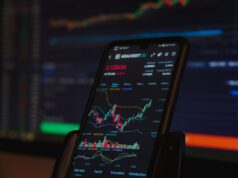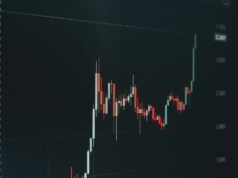In the vast and often tumultuous sea of cryptocurrencies, where fortunes can be made and lost in the blink of an eye, the emergence of peer-to-peer (P2P) exchanges provides a unique harbor for traders seeking autonomy. These platforms, built on the principle of direct transaction between individuals without the mediation of centralized authorities, offer a compelling alternative to traditional exchanges. Yet, as with any innovative venture, an understanding of their advantages and disadvantages is paramount for those who wish to navigate these new waters effectively.
The strengths of P2P marketplaces lie in their very structure. They empower users with the ability to trade directly with one another, fostering a sense of community while minimizing reliance on intermediaries. This decentralized approach offers not only enhanced privacy but also greater control over one’s assets. However, amidst these benefits lurk inherent weaknesses that can catch the unsuspecting trader off guard. The lack of regulatory oversight may lead to increased risks, as fraudulent activities occasionally rear their heads in the shadows of anonymity.
As we delve into the mechanics of P2P trading platforms, it becomes essential to weigh the scales of advantages against the drawbacks. While these exchanges can facilitate transactions with lower fees and greater flexibility, they also present challenges such as fluctuating liquidity and varying degrees of trust among participants. Understanding these dynamics is crucial for anyone looking to engage in this burgeoning market, ensuring that potential pitfalls are navigated with care and foresight.
In this article, we will embark on a comprehensive analysis of P2P exchanges, exploring the myriad benefits they offer alongside their notable disadvantages. With a keen eye on both strengths and weaknesses, we aim to illuminate the path for traders who seek not just profit but also a deeper understanding of this vibrant marketplace.
Understanding Peer-to-Peer Exchanges
In the vast landscape of modern finance, peer-to-peer (P2P) exchanges emerge as a beacon of autonomy and opportunity. These platforms allow individuals to engage in trading directly with one another, bypassing the constraints often imposed by traditional financial institutions. The very essence of P2P exchanges lies in their ability to democratize access to markets, enabling users to buy and sell cryptocurrencies without the burdensome fees and regulations that typically accompany conventional exchanges. This understanding of P2P trading is crucial for anyone looking to navigate this burgeoning domain.
However, while the advantages of P2P exchanges are evident, one must also be diligent in recognizing their inherent weaknesses. The decentralized nature of these platforms can sometimes lead to a lack of oversight, making them susceptible to fraudulent activities. Analyzing the potential drawbacks is essential for traders who wish to protect themselves in this unregulated environment. Without the safety nets provided by traditional platforms, individuals must tread carefully, armed with knowledge and caution when engaging in P2P transactions.
When we delve deeper into the overview of P2P trading platforms, it becomes clear that they offer a unique blend of strengths and challenges. On one hand, the benefits include lower transaction fees, greater privacy, and the ability to trade directly with peers across the globe. On the other hand, these advantages come with disadvantages such as slower transaction speeds and the necessity for thorough vetting of trading partners. Each interaction requires trust–a commodity that cannot be overlooked in the world of digital currency.
Moreover, in analyzing P2P marketplaces, it is vital to consider how they operate within an ever-evolving financial ecosystem. These platforms often feature user ratings and feedback systems designed to foster trust among participants. Yet, despite these measures, there remains an underlying risk; not all users maintain integrity in their dealings. Therefore, understanding both the strengths and weaknesses of these marketplaces equips traders with the tools needed to make informed decisions.
In conclusion, peer-to-peer exchanges represent a significant shift in how individuals engage with cryptocurrencies. As we explore their myriad benefits and drawbacks, it becomes apparent that success in this arena hinges on one’s ability to navigate its complexities. By embracing both the opportunities and challenges presented by P2P trading platforms, individuals can cultivate a more profound understanding of this innovative marketplace–one that holds promise yet demands respect for its potential pitfalls.
The Allure of Peer-to-Peer Exchanges: A Comprehensive Overview
In the vast landscape of cryptocurrency, peer-to-peer (P2P) exchanges emerge as a beacon of autonomy and freedom. These marketplaces, where individuals engage directly in trading without the intercession of traditional financial institutions, unveil a realm of benefits that appeal to both seasoned traders and novices alike. Understanding the dynamics at play within these platforms reveals an intricate tapestry woven from threads of opportunity, privacy, and accessibility. The advantages of P2P exchanges lie not merely in their convenience but also in their potential to democratize financial transactions, allowing users to navigate the complexities of the digital economy with a sense of agency.
Yet, as we delve deeper into the analysis of P2P trading platforms, it becomes evident that this innovative approach is not without its drawbacks. Each marketplace presents its own set of strengths and weaknesses, demanding careful consideration from traders embarking on this journey. While the allure of lower fees and flexible payment options stands strong, one must also grapple with concerns surrounding security and regulatory compliance. The decentralized nature of these exchanges can often lead to a Wild West scenario where trust relies heavily on personal judgment and the reputation of individual users.
In the quest for a balanced understanding, one cannot overlook the significance of analyzing these marketplaces through a critical lens. The strengths of P2P exchanges are palpable: they foster a sense of community among traders and can facilitate rapid transactions across borders without cumbersome intermediaries. However, this very strength may morph into a weakness when the lack of oversight invites malicious actors into the fold. As we navigate this duality, it becomes imperative to weigh both sides carefully; while one may revel in the benefits offered by P2P platforms, it is equally vital to remain vigilant against potential pitfalls.
Ultimately, understanding peer-to-peer exchanges involves recognizing that they embody a delicate interplay between freedom and responsibility. The advantages they present–be it in cost efficiency or user empowerment–must be tempered with an awareness of their inherent disadvantages. As we stand at this crossroads, traders are called upon to embrace the spirit of inquiry and discernment, forging their paths through these innovative marketplaces with eyes wide open to both possibilities and perils. In this dance between risk and reward, wisdom becomes our greatest ally in navigating the ever-evolving world of cryptocurrency.
Disadvantages of P2P Platforms
In the vast landscape of financial technology, peer-to-peer (P2P) exchanges emerge as a beacon for many seeking autonomy and control over their trading endeavors. Yet, as one delves deeper into this realm, it becomes evident that these platforms are not without their drawbacks. Understanding the weaknesses inherent in P2P marketplaces is essential for anyone considering venturing into this innovative yet precarious space. The allure of direct transactions often masks the underlying complexities that can complicate the trading experience.
One of the most pressing concerns when analyzing P2P exchanges is the issue of security. Unlike centralized platforms that typically boast robust safety measures, P2P marketplaces can leave users vulnerable to fraud and scams. The decentralized nature of these trading environments means that users must exercise caution and discernment with each transaction. Without the safety net of an intermediary, the burden falls squarely on individuals to protect themselves, creating an atmosphere where distrust can fester among traders.
Additionally, while P2P platforms offer certain advantages, they often come with limitations in liquidity. In contrast to their centralized counterparts, which can facilitate swift trades due to a larger pool of participants, P2P exchanges may struggle to match buyers and sellers efficiently at times. This lag can result in delays and potentially unfavorable pricing, leaving traders frustrated as they navigate a marketplace that lacks the immediacy they may expect. Thus, while freedom is a hallmark of P2P trading, it is tempered by the reality of market dynamics.
Furthermore, regulatory uncertainty looms large over peer-to-peer exchanges. As governments around the world grapple with the implications of cryptocurrency trading, the frameworks governing these platforms remain in flux. This unpredictability can create anxiety for users who are unsure if their chosen marketplace will endure or adapt to new regulations. Such instability may dissuade potential traders from fully engaging with P2P platforms, fearing that their investments could be jeopardized by sudden legal shifts.
In examining the strengths of P2P marketplaces, it is essential to recognize their ability to foster community-driven trading experiences. However, this communal aspect can also be a double-edged sword. The very connections that enhance user engagement can lead to misinformation and unreliable advice circulating within networks. Newer participants may find themselves swayed by persuasive narratives rather than grounded in sound analysis, highlighting another layer of risk associated with peer-to-peer trading.
Ultimately, understanding both the benefits and drawbacks of P2P exchanges requires a balanced perspective. While they offer unique opportunities for decentralized trading and personal empowerment, users must navigate a terrain marked by challenges such as security risks, liquidity issues, and regulatory uncertainties. As one embarks on this journey through peer-to-peer marketplaces, it becomes clear that informed decision-making is paramount–a guiding principle that will serve traders well in their pursuit of financial autonomy amidst a sea of complexity.
Conclusion: A Comparative Reflection on P2P Exchanges and Traditional Platforms
In the ever-evolving landscape of digital currencies, the emergence of peer-to-peer (P2P) marketplaces has brought forth a new dimension of trading that stands in stark contrast to traditional platforms. This is not merely a tale of technology, but a narrative woven with the threads of human interaction, trust, and the quest for autonomy. As we delve into the strengths and weaknesses of these exchanges, we find ourselves at a crossroads where benefits and drawbacks coexist in a delicate balance.
Understanding the essence of P2P exchanges requires an analytical mindset that appreciates both their advantages and disadvantages. On one hand, they offer a direct connection between buyers and sellers, fostering an environment rich with opportunities for negotiating prices and terms. On the other hand, the inherent weaknesses of these marketplaces–such as potential scams or lack of regulatory oversight–cast shadows that must be acknowledged. Such complexities compel us to explore further.
- Strengths of P2P Marketplaces:
- Direct transactions without intermediaries.
- Enhanced privacy and control over personal data.
- Flexibility in payment methods and pricing.
- Weaknesses of P2P Marketplaces:
- Higher risk of fraud and scams.
- Lack of customer support compared to traditional platforms.
- Potential legal issues due to varying regulations.
As we analyze this panorama, it becomes clear that both P2P exchanges and traditional platforms have their rightful place in the digital economy. Each offers unique strengths tailored to different types of traders. For those seeking autonomy and flexibility, P2P marketplaces present an attractive option; yet caution is paramount. Conversely, traditional platforms provide security and support that can soothe even the most anxious investor.
Ultimately, understanding these dynamics equips us with the knowledge needed to navigate this complex world. The choice between P2P exchanges and conventional platforms is not simply about preference but rather about aligning one’s trading strategy with the inherent qualities each model offers. In this dance between innovation and tradition, we find our footing by weighing the scales of benefits against the weights of disadvantages–a task as intricate as the art of trading itself.














